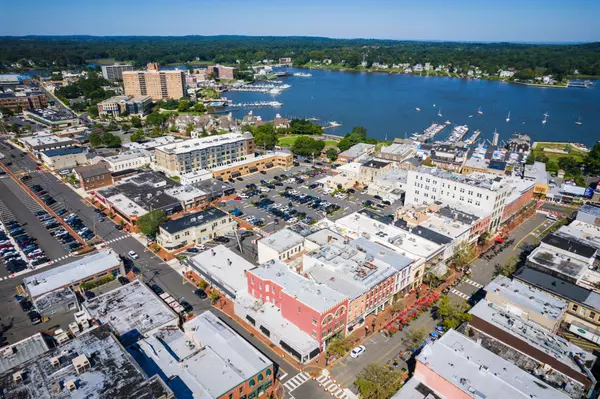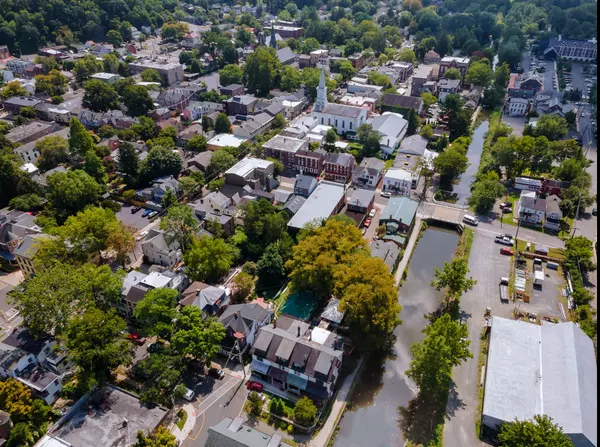Passaic County Housing Market Recap – September 2025

Stabilization or Stagnation? Reading the Signals in North Jersey’s Hybrid Market
Passaic County is standing on a knife’s edge. With statewide inventory rising and pricing momentum slowing, this market shows both resilience and fatigue — depending on where you look. For asset managers and institutional buyers, that mix of uneven demand and rising months of supply is precisely where opportunity begins to take shape.
The Bigger Picture: Rates Falling, Markets Rebalancing
The Otteau Group’s September outlook confirms what most investors already sense: inflation has cooled, oil prices are down, and home prices — which make up nearly 45% of core inflation — are declining in half of U.S. metros. That’s setting the stage for a continued drop in mortgage rates through 2026, potentially unleashing the next wave of real estate activity.
At the macro level, New Jersey’s unemployment rate sits at 5.0%, up from 3.0% in 2022, with job creation negative YTD (–4,000 jobs). The national economy remains uneven: Q1 GDP was –0.6%, followed by a +3.8% rebound in Q2 and continued strength in Q3. In short — volatility, not recession.
Mortgage rates have already fallen from 7.79% (October 2023) to 6.3%, and further easing could accelerate transaction volume in early 2026.
Key Numbers: Inventory Expands, Sales Edge Higher
Statewide, YOY home sales have increased +4.4% for the second consecutive month, signaling a modest rebound. But YTD, they’re still –1% compared to 2024 — a reflection of uneven recovery.
Inventory tells the real story. New Jersey’s unsold listings have surged +46% since January, adding 5,500 homes and pushing the statewide total above 17,500.
Passaic County’s local data mirrors that expansion, with most municipalities now showing 2.0–3.0 months of supply, compared to the 1.4–1.6 range seen in 2024. Countywide, unsold inventory is up 13% YOY, even as buyer activity remains roughly stable.
Municipal Highlights: Divergence Beneath the Surface
Passaic County’s submarkets illustrate how differently this rebalancing is playing out:
- Wayne Township continues to absorb inventory efficiently, holding steady at ~1.5 months of supply with buyer-to-seller ratios near 70/100 — a sign of stability and high turnover.
- Clifton and Totowa are softening; both now sit between 1.8–2.5 months of supply, with buyer ratios hovering around 55–65/100, implying slower absorption and more price negotiation.
- Paterson and Passaic City are flashing early distress signals, with months of supply rising into the 3–4+ range and unsold inventory exceeding contract sales by 2–3x in several months.
- North Haledon and Ringwood show the sharpest contrasts — moving from tight to oversupplied conditions in just two quarters. North Haledon’s supply peaked at 5.6 months, while Ringwood hovered near 2.6, underscoring the fragmentation between suburban and semi-rural demand pockets.
My thoughts:
Passaic County is repeating a familiar cycle: urban softness precedes suburban stabilization. Historically, when Paterson and Passaic City start showing 3–4+ months of supply, it signals the first wave of value compression across older housing stock. These early imbalances often lead to a six- to nine-month lag before suburban townships begin modest price adjustments of their own.The dynamic here is clear urban inventory builds first, driven by aging multifamily stock and affordability ceilings, while suburban areas like Wayne and North Haledon hold until equity-driven sellers finally adjust expectations. That lag creates a narrow, tactical window for institutional investors to accumulate well-located urban assets before the broader market reprices around them.
If Sussex represents the distress frontier, Passaic is the liquidity hinge the place where tightening spreads, aging inventory, and motivated sellers converge first.
Price Momentum: Cooling but Still Positive
Home prices statewide are up +7.5% YOY, but quarter-to-quarter appreciation slowed dramatically to +1.2% in Q2 2025 — a signal that we’ve likely passed the peak growth phase.
In Passaic, price deceleration is most visible in the $400K–$600K bracket, where inventory rose +19% YOY and buyers regained some leverage. The sub-$400K segment, however, saw an 11% sales decline statewide — and that affordability zone dominates Passaic’s older housing stock.
That combination — softening entry-level demand amid rising supply — often precedes a rise in short sales and REOs as liquidity thins.
Early Distress Indicators
Municipal charts show widening buyer-seller gaps across working-class submarkets. Paterson, Passaic City, and Prospect Park all recorded months this year where there were two to three times as many sellers as buyers, with demand ratios as low as 27–40/100.
Meanwhile, Pompton Lakes and Bloomingdale saw erratic months of supply readings (from 1.5 to 8.0), reflecting volatile small-market conditions and limited buyer pools — ideal territory for institutional acquisition of undervalued SFRs and small multifamily assets.
My thoughts:
Passaic’s price curve is flattening exactly where distress tends to surface first in the sub-$400K working-class corridor and the older $400K–$600K stock that powered the last cycle’s affordability surge. When appreciation slows but ownership costs stay high, liquidity becomes the stress test and that’s the phase we’re in now.For institutional investors, Paterson and Clifton represent classic “first-mover” markets: high transaction friction, legacy housing, and motivated sellers who reset pricing faster than suburban peers. The acquisition playbook here isn’t bulk REO yet it’s selective aggregation of small portfolios (SFRs and 2–4 unit multifamily) through direct purchase, note acquisition, or pre-foreclosure outreach.
The volatility in Pompton Lakes and Bloomingdale shouldn’t be read as instability; it's the opportunity gap that appears before balance returns. Smart capital builds in these conditions before the stabilization headlines appear not after.
Investment Thesis: Reading the Timing Window
As mortgage rates drift downward and job growth stabilizes, institutional capital is again circling suburban North Jersey — but selectively. The playbook here isn’t momentum; it’s positioning.
Three areas stand out for strategic entry:
- Sub-$400K inventory in legacy urban centers — ripe for discounted acquisition and rehab before the next retail credit expansion.
- Outer-ring SFRs (Wanaque, West Milford) — where yields remain strong and liquidity low, offering consolidation potential.
- Mid-tier homes in Wayne and Clifton — poised to stabilize faster as migration from Bergen and Essex counties resumes once rates dip below 6%.
Passaic’s uneven landscape rewards operators who can deploy flexible capital and manage through short-term softness.
Controlled Decline, Calculated Opportunity
Passaic County isn’t collapsing — it’s recalibrating. Rising inventory, slower appreciation, and widening divergence between urban and suburban markets all point toward early-cycle openings.
For hedge funds and asset managers, the 2025–2026 window offers a chance to accumulate assets at below-replacement cost before renewed rate-driven demand retightens supply.
Passaic’s data underscores the theme we’ve seen across North Jersey: rebalancing, not retreat.
Categories
Recent Posts







GET MORE INFORMATION

